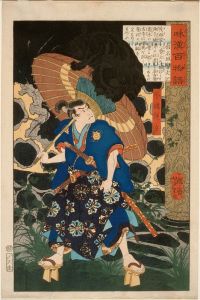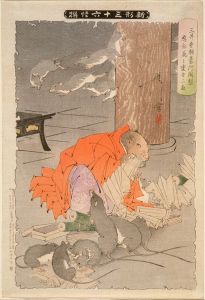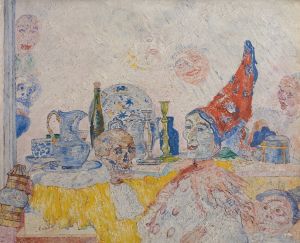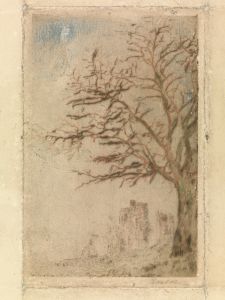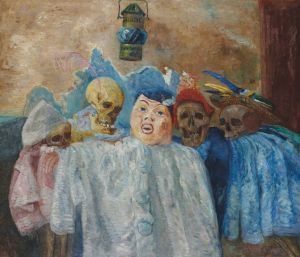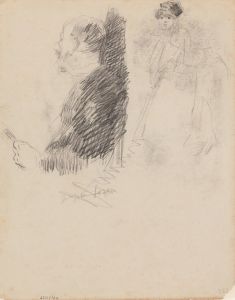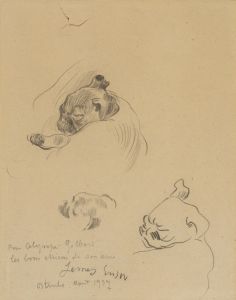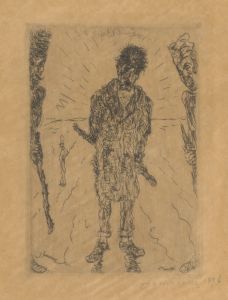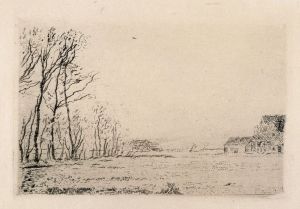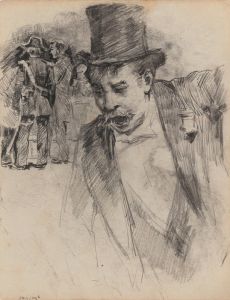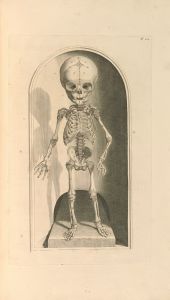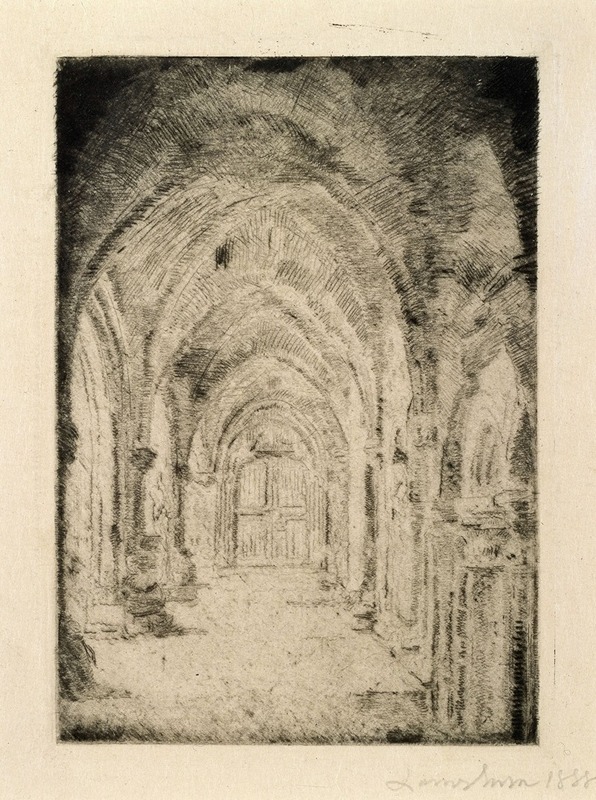
The Crypt
A hand-painted replica of James Ensor’s masterpiece The Crypt, meticulously crafted by professional artists to capture the true essence of the original. Each piece is created with museum-quality canvas and rare mineral pigments, carefully painted by experienced artists with delicate brushstrokes and rich, layered colors to perfectly recreate the texture of the original artwork. Unlike machine-printed reproductions, this hand-painted version brings the painting to life, infused with the artist’s emotions and skill in every stroke. Whether for personal collection or home decoration, it instantly elevates the artistic atmosphere of any space.
James Ensor's painting "The Crypt" is a notable work by the Belgian artist, who is renowned for his unique style that often incorporates elements of the grotesque and the fantastical. Ensor, born in 1860 in Ostend, Belgium, was a pivotal figure in the development of modern art, and his work is often associated with the Symbolist and Expressionist movements. "The Crypt" exemplifies many of the themes and techniques that Ensor explored throughout his career.
Ensor's art is characterized by its vivid use of color, intricate detail, and often macabre subject matter. "The Crypt" is no exception, as it delves into themes of death and the afterlife, which were recurring motifs in Ensor's oeuvre. The painting depicts a subterranean scene, possibly inspired by the catacombs or burial sites, which were of great interest to Ensor. His fascination with such themes can be traced back to his childhood, where he was exposed to the eclectic and sometimes eerie objects in his family's curiosity shop.
In "The Crypt," Ensor employs a rich palette to create a haunting atmosphere. The painting's composition is dense, with figures and objects tightly packed into the space, creating a sense of claustrophobia and unease. This technique is typical of Ensor's work, where he often used crowded compositions to evoke a sense of chaos and disorder. The figures in the painting are rendered with Ensor's characteristic distortion, giving them an unsettling, almost spectral quality.
Ensor's use of light and shadow in "The Crypt" is particularly noteworthy. He often played with contrasts to highlight the eerie and otherworldly aspects of his subjects. In this painting, the interplay of light and dark enhances the mysterious and ominous mood, drawing the viewer into the depths of the crypt. This manipulation of light is a testament to Ensor's skill and his ability to convey complex emotions and themes through his art.
"The Crypt" also reflects Ensor's interest in the human condition and the existential questions surrounding life and death. Through his depiction of the crypt, Ensor invites viewers to contemplate mortality and the unknown. This introspective quality is a hallmark of Ensor's work, as he frequently used his art to explore philosophical and existential themes.
James Ensor's influence on modern art is significant, and "The Crypt" is a prime example of his innovative approach to painting. His work paved the way for future generations of artists, particularly those involved in the Expressionist movement, who sought to convey emotional experiences rather than realistic depictions. Ensor's bold use of color, his exploration of macabre themes, and his distinctive style continue to captivate audiences and inspire artists today.
In summary, "The Crypt" by James Ensor is a compelling piece that encapsulates the artist's fascination with death, his innovative use of color and composition, and his profound impact on the trajectory of modern art. Through this painting, Ensor invites viewers to engage with the deeper questions of existence, making it a timeless and thought-provoking work.





